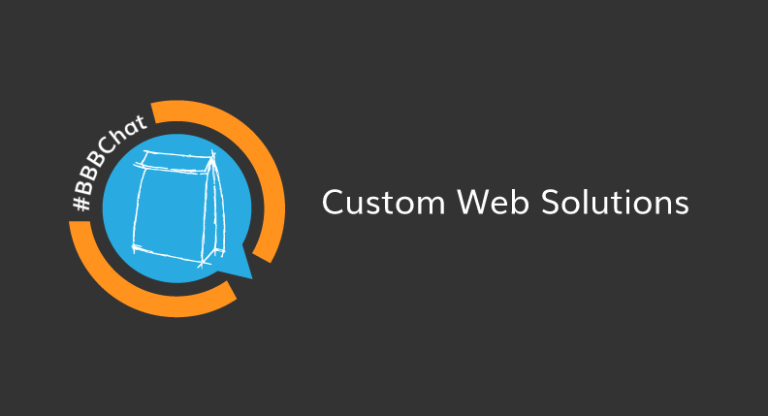One Reason Why Your Website is Going to Suck

There’s a lot of reasons why your website will probably fail to deliver the way you need it to; there’s one reason in particular that will cause this failure and it’s something that happens way before you launch the website. It—the failure—probably happens before your first strategy meeting. It doesn’t have anything to do with the web server running your site; it has nothing to do with the code written to build your site; it has nothing to do with the visual appearance or user experience. Nope. So what is it that’s going to cause this “suck-age?” Your content, people. If you’re not creating awesome and valuable content people are not going to show up. Period.
Real talk: Many websites fail to perform up to the expectations of their owners and key stakeholders—this is not news. There are a number of reasons why this might be the case. The primary issue I find has to do with content. Content, content, content! Don’t become content when it comes to content. Yes, I just went there; without fail, I’ll see feature rich sites go out the door without the content to support them. Yes, YOU NEED content from the outset and I’m not just talking about your “about” page.
Content Marketing is simply a strategy for creating content that someone you care about—your customers—will find value in. That’s it. What’s involved with that strategy? A lot! Off the top of my head, Content Strategy and Marketing comes down to these basics:
- Determining the type of content that will be valuable to a customer
- Creating a process for creating the content that will be valuable to your customer
- Identifying people to help manage and produce the content
- Commit and commit again.
If possible, the first thing to do is to look at your existing content and determine what’s already popular, it will help debunk any assumptions you may have, or prove them right. Either way, it’s important to know what content already brings people to your website; that will help lay-down a baseline for the content that will need to be created.
We call this a Content Audit and you can do this with a simple spreadsheet and Google Analytics (if you’re using it and shame on if you’re not!). It’s a good idea to get a link of all your website’s page and post URLs, if you can. If you’ve submitted a site map to something like Google Webmaster tools, that would be a fast way to get started, since you can copy and paste the URLs you find there. Otherwise you’ll need to click-through your site to find the links; also an RSS feed may aid you there. Having this information will be beneficial later on as you determine what you’ve created vs. what actually brings people to the site. You may be surprised.
Next, have a look at Google Analytics, or similar. Look at the ‘Behavior’ report by going to the Behavior tab and clicking ‘Site Content’
Once you know what brings people to your site you have a choice to make: Do you continue creating content that people have read and will likely continue reading. Going with content that already performs is both wise and safe. However, you’d be remiss if you didn’t take time to look at the report for more opportunities.
Now, looking at the previous image we can probably come up with a few basic ideas to get us going: Writing up something about Big Commerce and WordPress; perhaps talking about the steps it took to migrate from BC to WC is a good idea. Perhaps writing about one of our projects, as a case study would be wise, too.
How to think about content strategy
Remember, content marketing is about developing a process to create valuable content. Valuable to whom? To your customers of course! We can’t make any assumptions if we want to generate content that is useful; but we do need to make a few to get things moving.
- What does your business do? What is the mission statement? Start with that. For us, DigiSavvy, our tagline is “We’ll get you to where you’re growing.” We’re talking about growing businesses using technology and data. How can we use that to provide value?
- What the actual f*ck do you do for your customer? We do web development, PPC (Paid Search, see Adwords), website reviews and more. Do people need these services? Yes! They definitely do!
- How can you talk about the things you do in a way that demonstrates value? A simple question, yet also difficult to answer. It’s tricky, but doable. Our design and development combined with a content strategy can help generate more organic traffic for your website. Our PPC management skills will get more relevant click and sales for you. Simple.
So what it comes down to is: What is your value statement? What do you actually do for your customers? Communicate that value back to a potential customer.
Who is it for?
You should always know who you’re writing for. Who is your audience? Anyone who owns a house within 75 miles?? Perhaps. Maybe your customers are not limited by Geography; regardless, you need to think about it.
I have a client whose customers are anyone with a home in a 75 mile radius of his shop. That makes it easier to create targeted ads on Facebook, Bing and Google. But what about the content??? Well, he works with home owners. He’s an electrician. So he can create content about a wide variety of topics. Choosing and installing ceiling fans; running ethernet cables around your house; maintaining electrical panels or even writing up offers for inspections and installations. There’s a lot a business can do.
For DigiSavvy, we do a lot with WordPress. I speak at a lot of events and even organize a few. I know a ton of developers, but our content isn’t really for them; our preferred audience is for people who would want to pay someone to build or revamp their site or to manage an ad campaign. That’s an important distinction. Now, we could create content that talks about the value of using DigiSavvy on a project that provides value to a developer; we can talk about how we can partner with them on a variety of things that have nothing to do with content.
Know who your audience is and who you’re targeting. It’s not everybody in the world; perhaps it’s a small community; maybe you ARE targeting everyone everywhere, but there should be common things that tie them together such as desires, needs, experiences etc.
Keyword Strategy overlaps here, too. Simply this is a process of identifying words and/or phrases that help people find your website via relevant content. Knowing what your customers search is useful and you can look at some keyword strategies here and here.
I’m reminded of a client who did a great job of outlining her site before hand, which is a great way to visualize the end-result. But you know what else she did? Thought through her content, answered the above questions and began to create content. At launch she will have no less than THIRTY pieces of original content ready to go and schedule.
Breaking it down
Yes, content IS hard. But if you site down, take 30 minutes to think about the things we mentioned above, you’ve then got a great head start. This is something you should be doing BEFORE you talk to anyone about your website. Don’t be afraid, do bounce your ideas and assumptions off of friends, family, colleagues and existing customers. Figure out what they think about your business and the value you provide.
There’s a lot of opportunity there, you just need to do some investigating, question-asking and get the ball rolling.
Get Notified When We Publish New Content!
Join more than 2,500 people who get our marketing automation, business marketing, and WordPress news!







